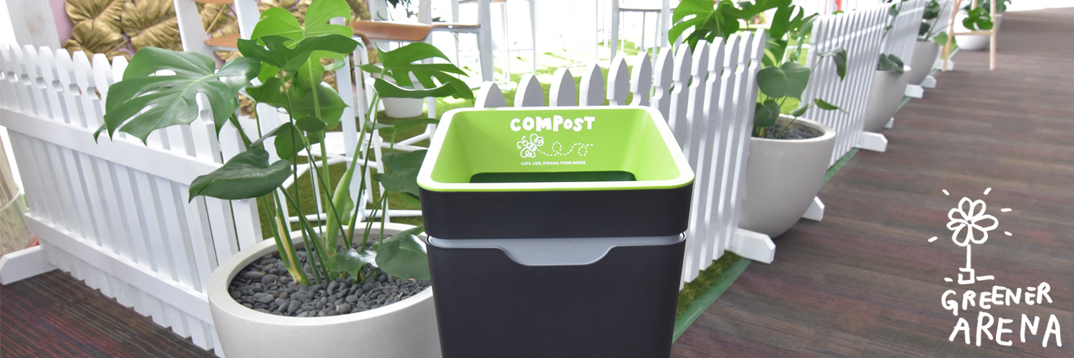SUSTAINABILITY
Our goal is to minimize the environmental impact of QPAM Limited (Spark Arena) while ensuring it operates as a sustainable and conscientious venue for guests, hirers, and stakeholders. A typical show at Spark Arena emits carbon via our electricity usage, HVAC systems, the food and drinks we serve, the fan transportation to and from events and the productions we’re hosting on stage. Reducing our carbon footprint through science-based action is a priority for Spark Arena, and these are just some of the initiatives we’re deploying to help achieve this.
- Spark Arena is Toitū carbonreduce certified organisation in line with ISO 14064-1, committing to measuring our carbon output through Toitū with annual monitoring and certified operations to ensure continual improvement for a lower carbon future.
- We use 100% compostable serve-ware for public events, replacing all single-use cups and hot food packaging with plant-based alternatives that are turned into quality compost in just three months. Other packaging from external suppliers is also 100% compostable, including Duck Island Ice Cream and Proper Crisps. All these compostable items go into one of our many compost bins located around the arena.
- Where possible we serve customers cans and bottles so the product comes straight from the source to avoid the unnecessary creation of more compostable items.
- We've teamed up with some other forward thinking companies including Green Gorilla and Closed Loop who provide waste sorting diversion services for all our waste and recycling to ensure contamination does not occur and other circular economy solutions.
- We measure our waste and recycling volumes, and currently have a landfill diversion target of 85% for all events. For most concerts and shows, our diversion for landfill sits at over 90%.
- We no longer have landfill bins in the arena for public events.
- We are currently replacing all faulty lights with energy-saving LEDs.
- Only using mobile tickets for our events unless absolutely essential, saving around 450K paper tickets each year (based on 10% of people using paper tickets).
- Spark Arena is conveniently located close to public transport, buses and accommodation, reducing the need for private vehicles/transport. We encourage all patrons to use public transport.
- Our food and drink outlets provide vegan options including dumplings, falafel, fries, potato crips, wine, RTD and beer.
- We use eco-friendly cleaning products including Ecostore across all our public bathrooms.
- Our arena bees onsite are busily making honey using nectar collected from our backstage garden.

